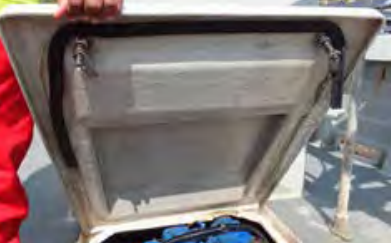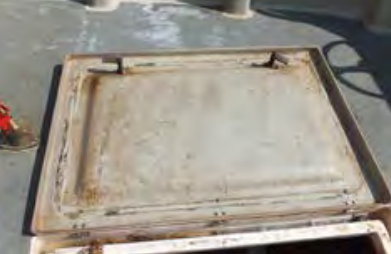As UK MAIB presents in its latest Safety Digest, three fishermen went to haul some static nets. Yet, after sometime the vessel began sinking and the fishermen had to urgently call the coastguard to come to the rescue. Later on, the inspection showed that some equipment was outdated and wasn’t working, despite the fact that the vessel had been updated by one of the fishermen five years ago.
The Incident
Three fishermen departed the port to haul some static nets and hopefully catch some Dover sole. The skipper owned the 6m GRP boat for 5 years, which he built it from new. The vessel had up-to-date materials, flush deck hatches for access to the engine and a storage compartment, and five freeing ports on both sides. Although the skipper operated the boat on a part-time basis, it was registered with a fishing licence and represented a substantial investment.
The MCA inspection was due in a few months and it was in the back of the skipper’s mind that a few jobs needed to be done.
Following, the vessel arrived at the static nets, which were located 3 nautical miles offshore and the men began retrieving them with the hauler and stowing them in net bins forward. Due to the fact that the net bins filled, the boat started to trim by the head. Neither the skipper nor his crewmen noticed sea water starting to come through the freeing ports onto the deck and over the flush deck hatches.
Later on, the fishermen saw that the boat’s deck was awash. By then, the boat had started to sink rapidly beneath them, so the skipper hurriedly transmitted a ‘Mayday’ call to the coastguard. He and the crewmen then donned lifejackets and frantically tried to bail the water out of the boat.
About 6 minutes later, the vessel eventually sank and the men were left in the water. The coastguard had sent a lifeboat to their position, and within 30 minutes the men had been plucked from the water.
Some time later, the deck hatch seals were found to be either missing or damaged. It is almost certain that while the deck had been awash, water had seeped down into compartments below and, although automatic bilge pumps were fitted in these, they failed to operate.
Lessons Learned
- If not maintained and periodically checked, flush deck hatches provide instant access for water to get inside a boat and reduce its freeboard. The resulting potential for the loss of a boat puts the low cost of rubber seals and the minimal effort required to fit them into perspective.
- Automatic bilge pumps only stay automatic for so long. Eventually they stop working, and it is better to find this out before they are needed. Make the testing of bilge pumps and float switches part of a regular routine.
- Don’t wait for an MCA inspection to ensure that your safety equipment is in date and works. Safety equipment is for ‘safety’ not compliance. Emergencies invariably occur without warning, and will not wait until after the next visit from the surveyor.
- By themselves, personal flotation aids and “Mayday” calls increase the likelihood of survival. Used together, the likelihood is increased even further.

































































